A Guide to Bouldering in the UK
Test your grip and nerves with bouldering in the UK. From scenic mountains and rugged sea cliffs to hidden caves, coves, and natural boulders, the UK offers a diverse and thrilling landscape for climbers of all levels – whether you're a seasoned pro or just starting out.
This guide covers everything you need to know to take on the sport: from essential equipment to some of the top bouldering spots across England, Scotland, and Wales.
Please note: As with any outdoor adventure sport, bouldering comes with risks. We strongly recommend doing your own research and taking proper safety precautions before heading out. There are plenty of organised excursions and qualified instructors across the UK who offer safe and supportive introductions to the sport.
What is bouldering?
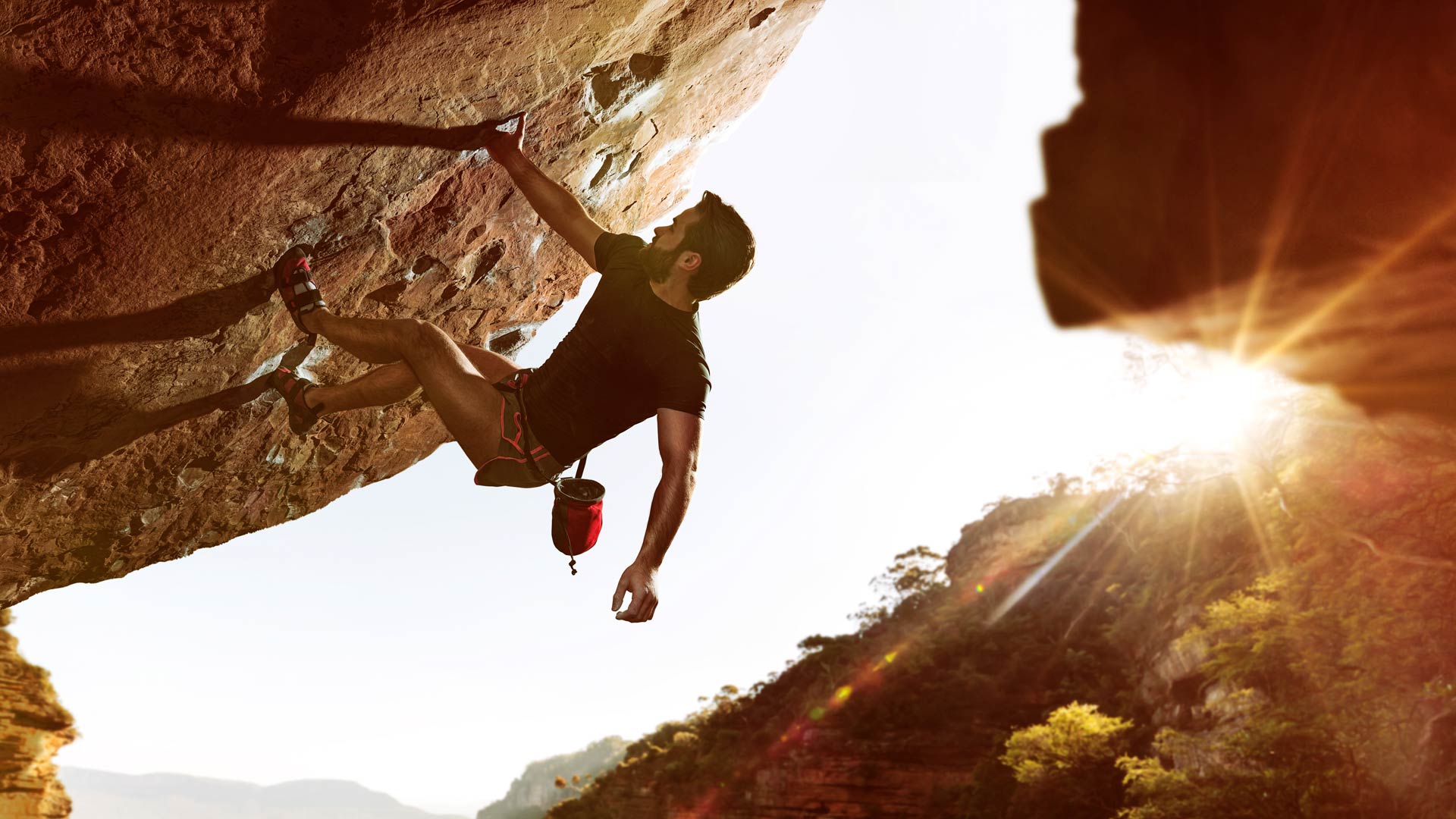
In short, bouldering involves free climbing on rocks, mountains or cliffs, without ropes or a harness. It carries more risks than rock climbing because it’s undertaken with little safety equipment.
Beginners usually start their bouldering adventure indoors, as climbing centres are ideal for testing the waters. These centres offer a variety of challenges, and experts are close by to ensure everyone is safe and using the correct techniques.
When you first embark on bouldering outdoors, you’ll notice that different boulders are graded depending on their difficulty. The grading systems used are a great way to gauge whether a location is safe to attempt or not, depending on your experience.
Bouldering vs rock climbing
Although bouldering and rock climbing may seem similar at first glance, they are quite different in terms of technique, equipment, and experience. Both involve climbing from point A to point B using strength, balance, and problem-solving, but that’s where the similarities end.
In bouldering, climbers take on shorter routes, usually no higher than 6 metres, without the use of ropes or harnesses. Instead, crash pads are placed on the ground to soften any falls, and a spotter may assist from below. Bouldering can be done alone and focuses on powerful, technical moves in short bursts, often requiring explosive strength and problem-solving.
In contrast, rock climbing involves much taller climbs, ranging from 10 to over 100 metres high, and requires safety gear such as a harness, rope, helmet, and belay system. Climbers are usually partnered with someone who manages the rope from below. Rock climbing demands more endurance and a steady pace, as the routes are longer.
Who can go bouldering?
Bouldering is an activity that people of all ages and skill levels can enjoy. Whether you're a total beginner or an experienced climber, bouldering offers an accessible and rewarding way to stay active, build strength, and challenge yourself mentally and physically.
As there’s no need for a partner, you can go bouldering by yourself or with others. The sport also needs minimal equipment, so it's definitely more cost-effective.
Top 10 best bouldering sites in the UK
There are plenty of fantastic bouldering spots across the UK, offering something for everyone, from beginners looking to test the waters to experienced climbers seeking a challenge. Here are some incredible bouldering locations with local campsites, so you can relax after an active day.
1. Bosigran, Cornwall

Bosigran in Cornwall is a large granite sea cliff perched high above a boulder-strewn cove in West Penwith. The elevated cliff makes it a reliable spot to climb, even if the sea is rough or the tides are not ideal. The stunning location is great for experts and beginners.
There are several areas of the cliff that you can climb, including the Main Cliff, the Seaward Cliff, Bosigran Ridge, and the Great Zawn.
Nearest campsites:
- Sennen Cove Club Site
- Tregurrian Club Site
- Veryan Club Site
2. Saint Bees Head, Cumbria

If you’re looking for breathtaking landscapes and beautiful views, Cumbria is the place to visit. Saint Bees Head has a red sandstone bluff which forms one of the most dramatic natural features along the entire coast of North West England. Here you’ll find some of the finest-looking boulders that beginners and experts can tackle.
If you’re bouldering at Saint Bees Head, be sure to check the weather, as climbing in winter can come with its own set of obstacles.
Nearest campsites:
- Ravenglass Club Site
- Braithwaite Village Club Site
- Keswick Club Site
- Derwentwater Club Site
3. Stanage Edge, Peak District
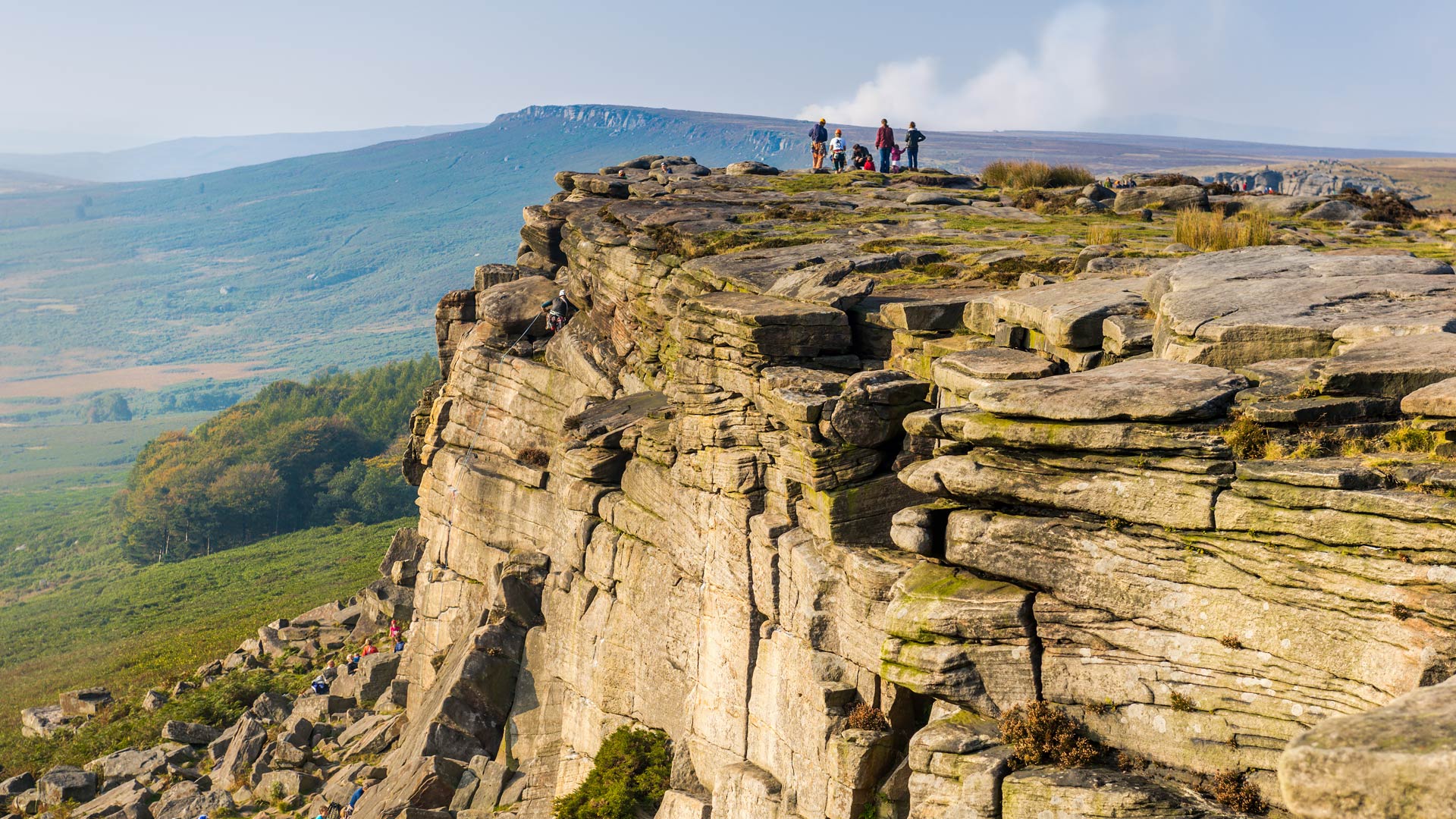
Stanage Edge, in the Peak District, is the perfect destination for bouldering in the UK. It has stunning views of the Dark Peak moorlands and the Hope Valley.
The gritstone edge stretches for approximately 4 miles, and while walking through it to find the perfect boulder, you’ll experience the location's geology and natural history.
Also, a fun fact for film fanatics, Stanage Edge was recently featured in the classic film ‘Pride & Prejudice’. So you’ll be able to spot the exact location on your climbing journey.
Nearest campsites:
4. Southern Sandstone, East Sussex
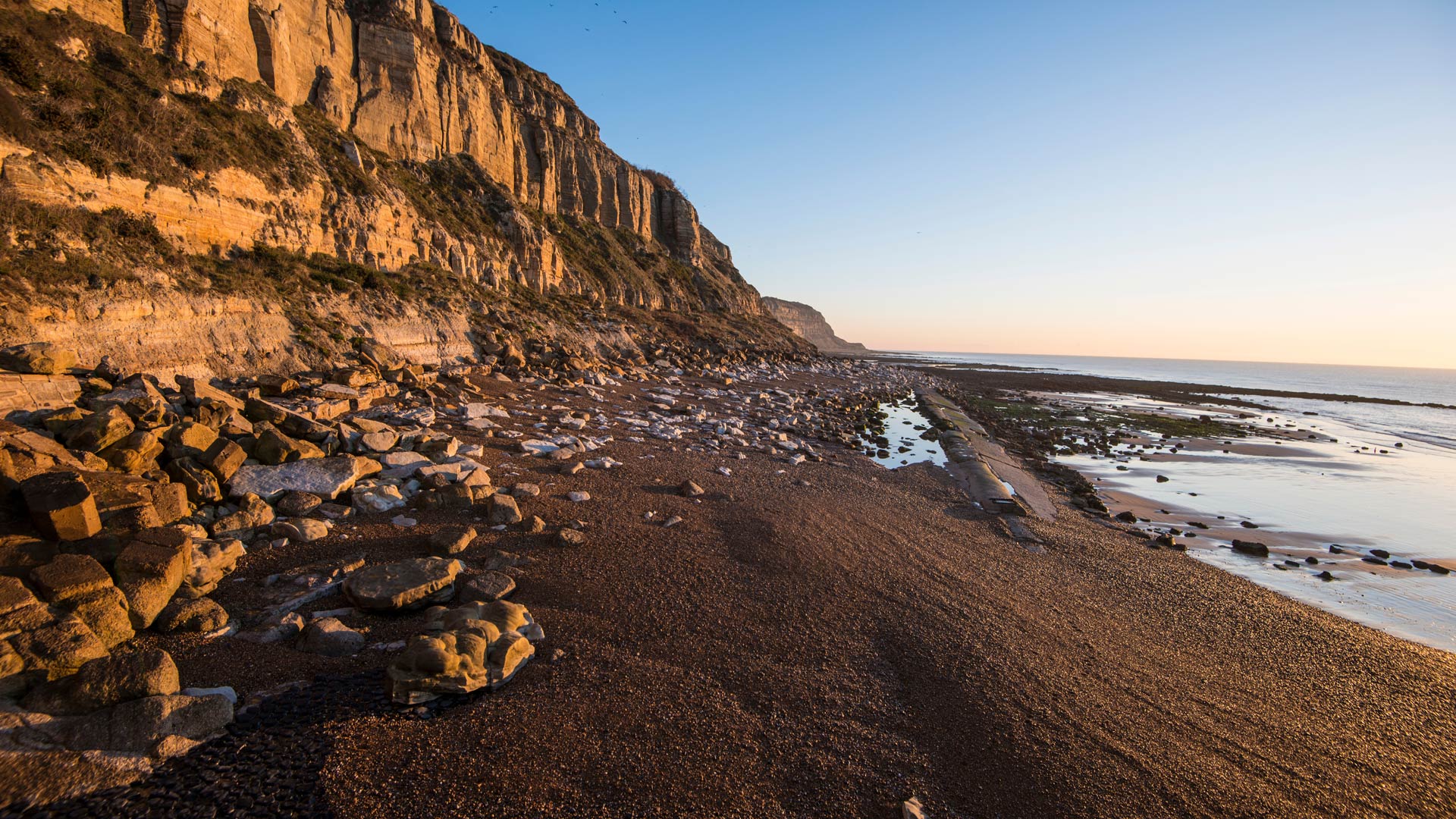
If you’re new to outdoor bouldering, this brilliant spot near the capital is great for perfecting your technique.
The softer sandstone presents challenges that can expose weaknesses in technique, footwork and core strength. So, before you tackle huge boulders and take on adrenaline-pumping risks, perfect your technique at this hotspot.
Nearest campsites:
- Normans Bay Club Site
- Crowborough Club Site
5. Lake District, Cumbria
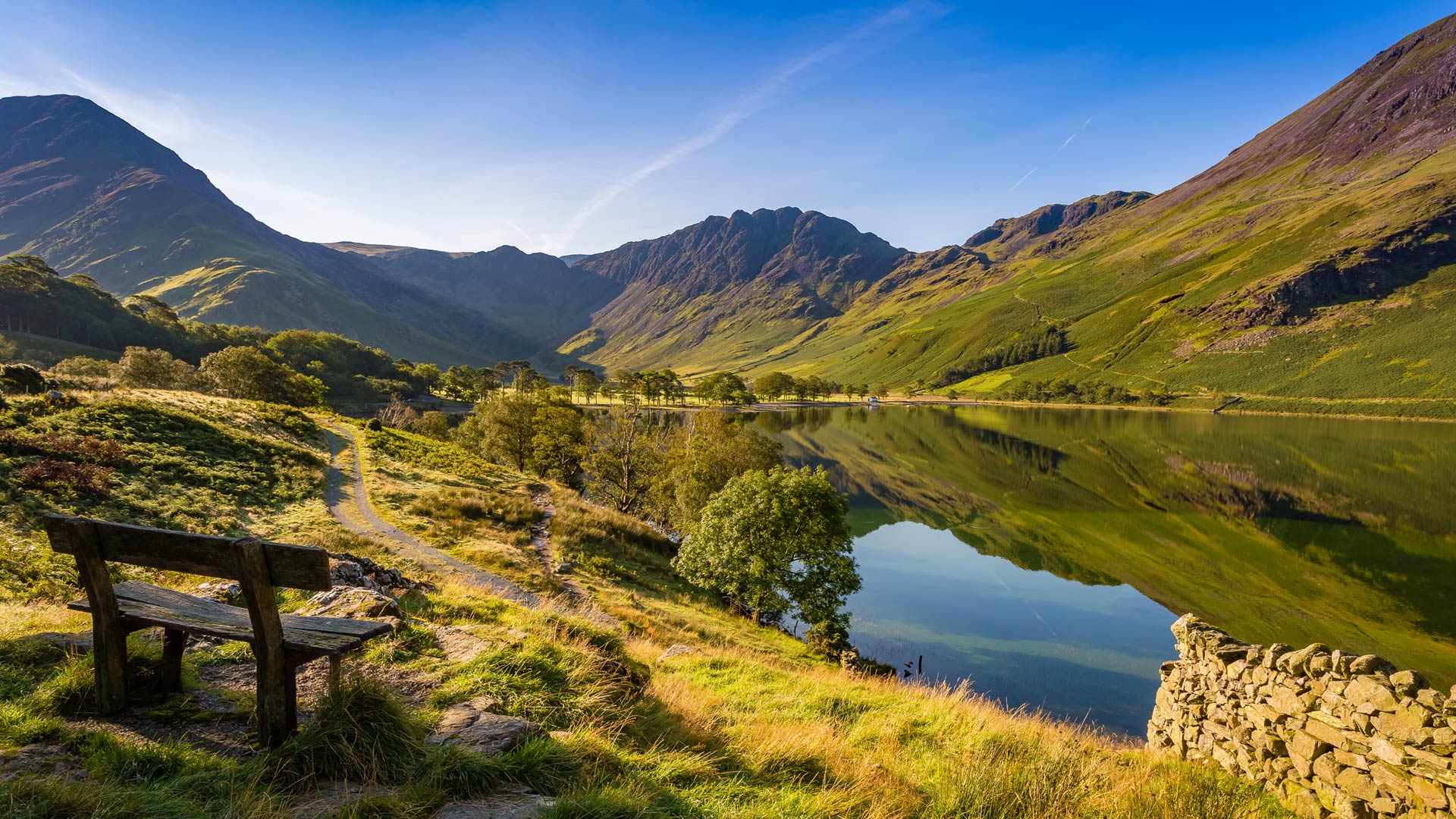
The Lake District is home to some of the UK's best bouldering spots. With 2,362 km² of beautiful land, there is something for every climber.
If you’re new to bouldering, the best outdoor spots include Pudding Stone, Farleton Crag, Carrock Fell Crag, Eskdale Fisherground, Black Crag and Dunnerdale Boulders.
These spots are not only great for beginners, but they’re also prime locations for a large group of climbers with a variety of abilities.
Nearest campsites:
- Bowness on Windermere Club Site
- Ravenglass Club Site
- Windermere Club Site
- Kendal Club Site
6. Thorn Crag, Lancaster

Thorn Crag is a great outdoor bouldering location for the spring and autumn. Its gritstone boulders overlook a magnificent sea view, and each boulder offers its own set of challenges, great for beginners or experts.
Most bouldering is done on three main boulder clumps, a few minutes from one another, but once you’ve tackled each boulder, you'll feel confident to tackle more.
Nearest campsites: Clitheroe Club Site
7. Portland, Dorset
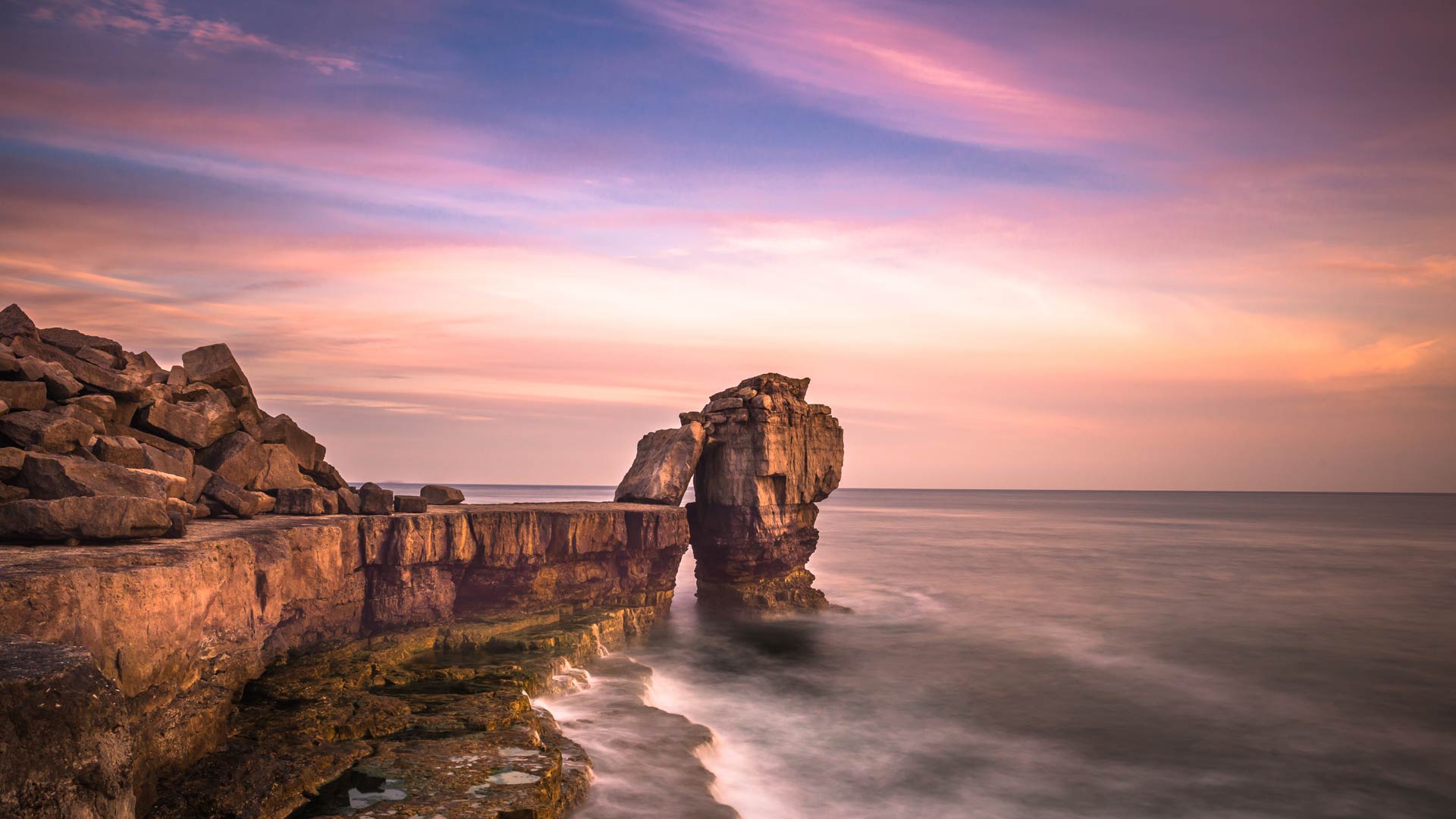
When looking for UK bouldering locations that offer adrenaline-packed climbing, are easily accessible, and are fun for all, Dorset, particularly Portland, is the place to be.
Portland is great for climbing in summer. The island connected by a small isthmus has a whole shoreline dotted with climbing spots that offer a variety of challenges. The limestone rock has a mix of smooth, bullet-proof boulders to rough and ready tidal boulders. There really is something for everyone as Portland offers technical to powerful, high to lowball, slabs to roofs, and boulder fields to cliff-type boulder walls.
Nearest campsites: Moreton Club Site
8. Dumbarton, Scotland
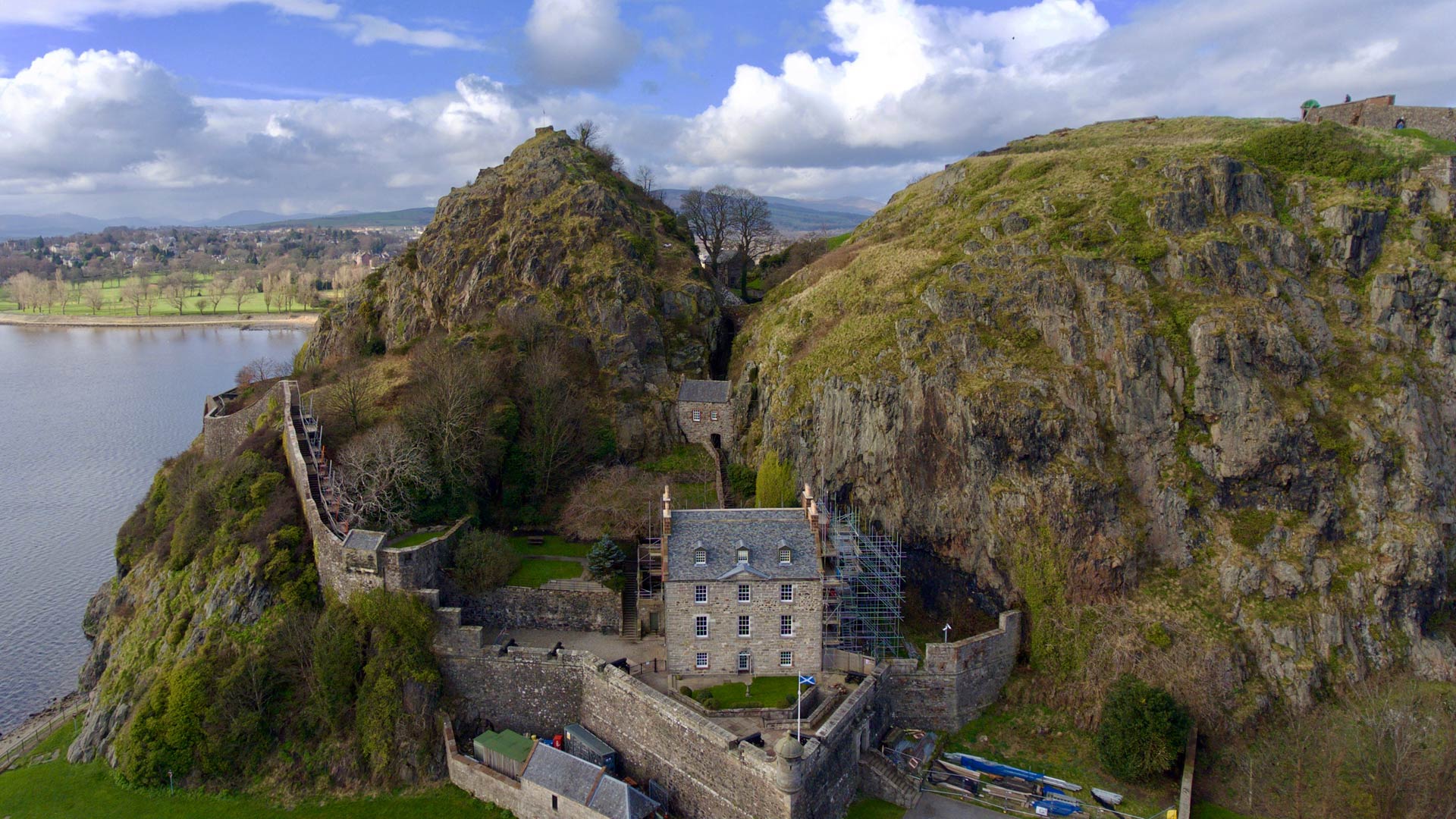
Dumbarton is the home of Scottish bouldering. It’s located just outside Glasgow and has challenges for all climbers.
The hard basalt rocks are skin-friendly but can lack friction during the warmer months. With that said, the brilliant thing about Dumbarton is that many of the rocks are overhanging or sheltered, so even when it rains, you’re bound to find dry rock. If the rain stops, you’ll only have to wait a short moment before the rocks begin to dry, and you can start climbing.
Nearest campsites: Milarrochy Bay Club Site.
9. Glen Nevis, Scotland
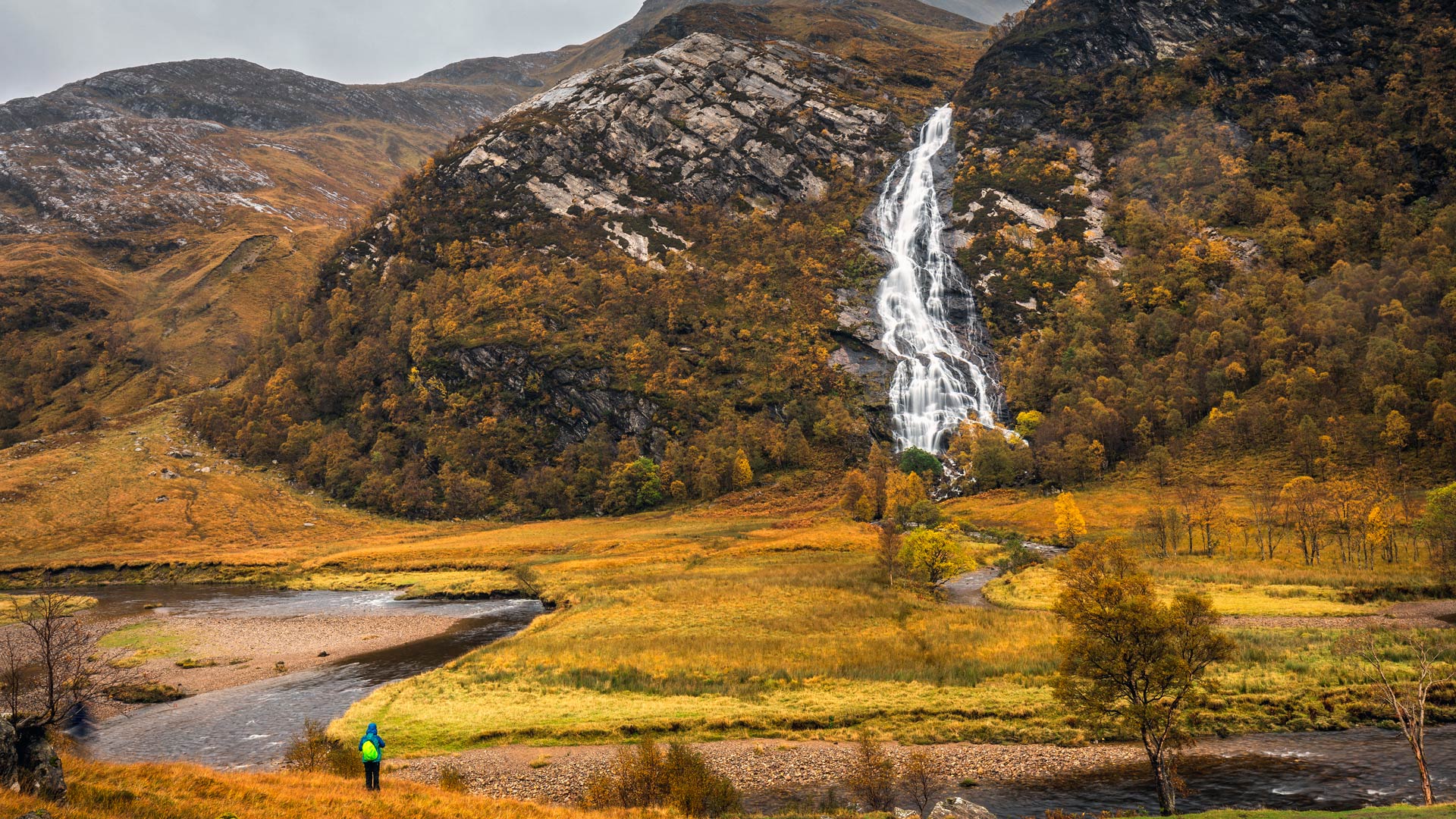
If you’re after stunning views and a climbing experience like no other, Glen Nevis has some exceptional bouldering spots scattered around.
In the past 20 years, bouldering has become popular in the area. The schist rock offers steep and permanently dry overhangs, caves and a variety of bouldering formations for all abilities. Best of all, the scenery in Glen Nevis is unmatched, so you’ll have something worth climbing for.
Nearest campsites: Glencoe Club Site.
10. Snowdonia National Park, Wales
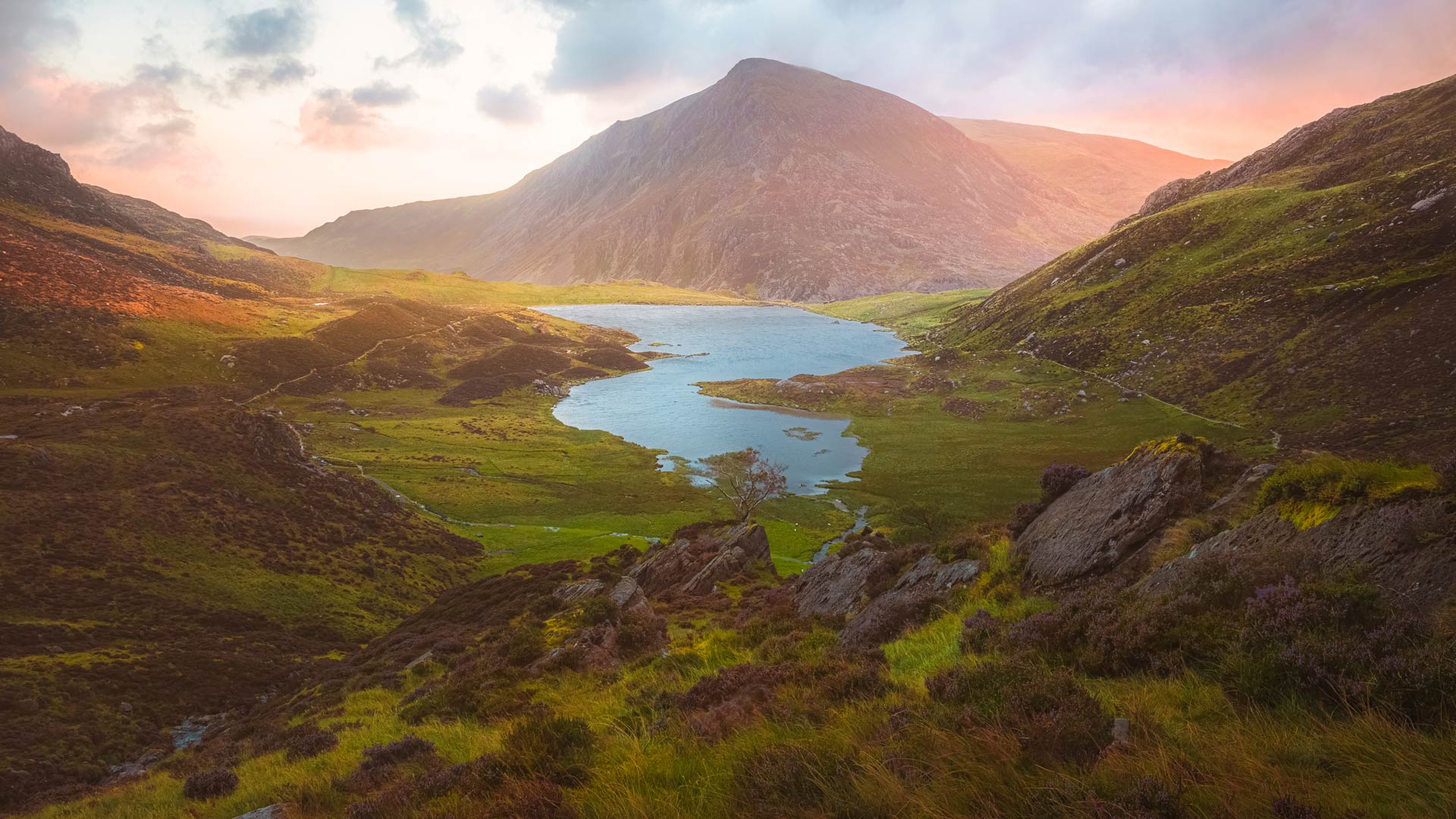
Snowdonia consists of the highest peaks in Wales, and it’s accompanied by many rocky valleys that are great for bouldering.
Cromlech Boulders, Wavelength Boulders, Utopia Boulders, RAC Boulders, and Sheeps Pen are some of the most popular bouldering destinations in Snowdonia National Park. These hotspots vary in difficulty for climbers and are great for groups with varying abilities.
Nearest campsites:
- Llanystumdwy Club Site
- Bala Club Site
Equipment for bouldering
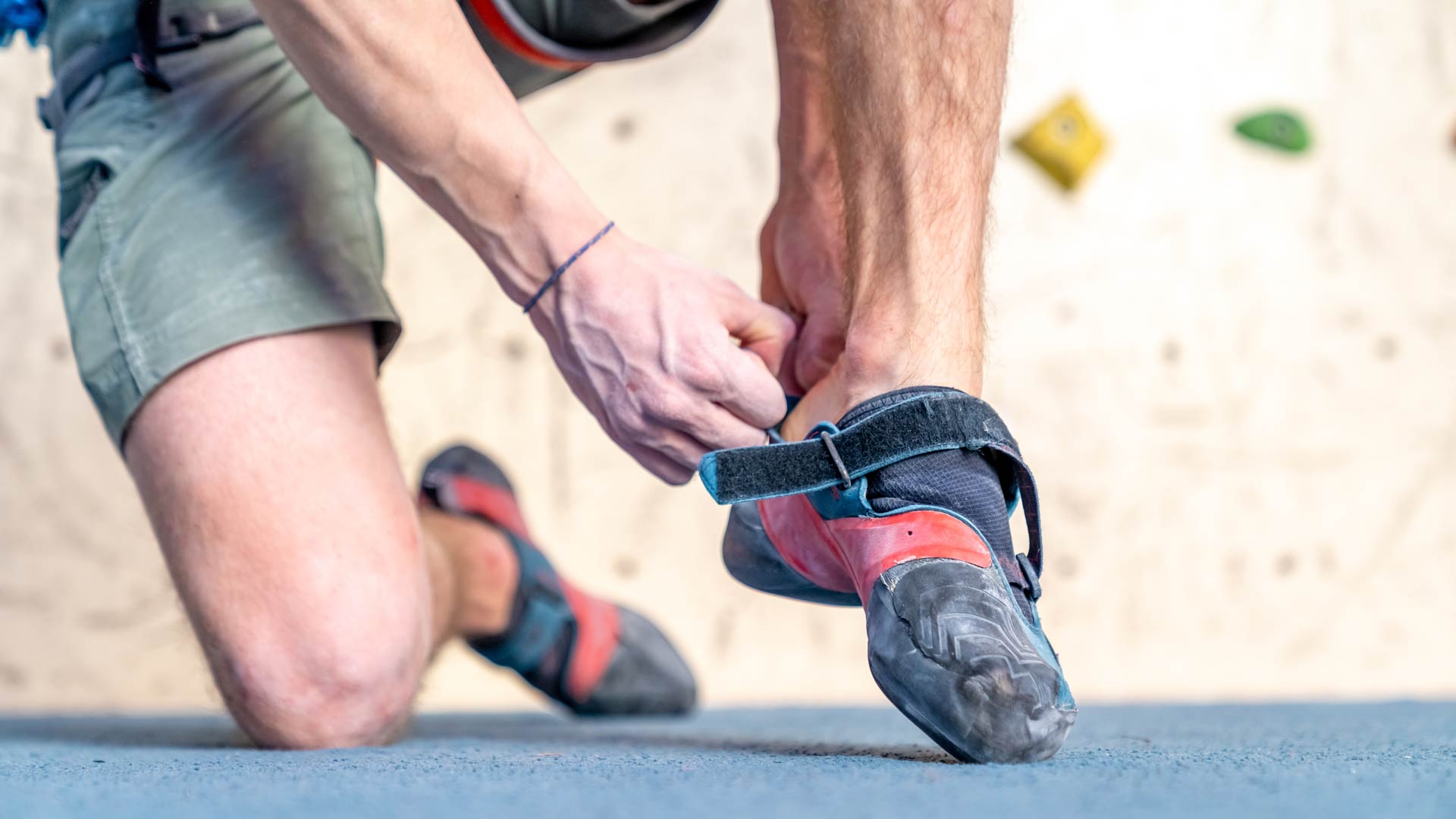
If you’re new to bouldering, it's a good idea to start at an indoor climbing gym or book a guide for your first outdoor experience. A guide can walk you through basic techniques, ensure safety protocols are followed, and help you use the right equipment for a safe and enjoyable climb.
If you’ve already got some experience, here’s a handy checklist of essential gear for bouldering:
- Climbing shoes: Snug-fitting shoes with a sticky rubber sole for maximum grip and precision on holds.
- Chalk and chalk bag: Chalk keeps your hands dry and improves your grip. You’ll need a chalk bag to carry it, though you can also use liquid chalk or a chalk bucket.
- Bouldering mat: A bouldering mat or crash pad is a thick, foldable foam pad placed on the ground to cushion falls and reduce the risk of injury.
- Brush: This is used to clean the holds from chalk, dirt, or grease. It will give you a better grip.
- Finger tape: Useful for protecting skin, taping up injured fingers, or providing joint support during climbs.
- First aid kit: Always good to have on hand in case of minor injuries or emergencies.
- Correct clothing: Wear breathable, flexible clothing that allows free movement, like leggings, climbing trousers, or athletic tops. Avoid loose or bulky items that could snag on rock features.
Whether it’s your first time bouldering or you’re taking on a tougher challenge, share your bouldering experience with us by tagging the Camping and Caravanning Club on Instagram or Facebook.
